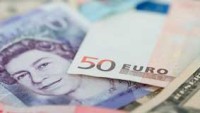 Yesterday’s surprise move by the Bank of England to cut interest rates, increase QE, and launch its own medium term financing program along the lines of the ECB’s LTRO appears to be an attempt to assure the markets it will do whatever it takes to not only support the UK economy, but also reassure the markets it is not out of ammunition, with respect to monetary policy.
Yesterday’s surprise move by the Bank of England to cut interest rates, increase QE, and launch its own medium term financing program along the lines of the ECB’s LTRO appears to be an attempt to assure the markets it will do whatever it takes to not only support the UK economy, but also reassure the markets it is not out of ammunition, with respect to monetary policy.
While it may well have done that the measures announced yesterday do give the impression of overkill. The contrast between what the MPC did yesterday and what they did in July was quite stark and the fact that the additional QE measures found dissent from three policymakers does appear to suggest some division on the MPC.
The more important question revolves around the question of yield compression, its effects on bank balance sheets as well as further deterioration in pension fund liabilities.
While the new “term funding scheme” is a mechanism to address part of this problem, allowing banks to borrow from the Bank at 0.25% provided they lend the money on to businesses and consumers, its design appears to be for a problem that isn’t too serious at the moment. Furthermore when banks are being required to insulate themselves as a result of higher regulatory requirements they are going to much less inclined to lend in any case.
If a company doesn’t feel compelled to borrow money to invest when base rates are at 0.5%, why would it feel compelled to do so when base rates are at 0.25%?
The problem in the UK isn’t availability or cheapness of credit but demand for it, and that demand is only likely to come when the UK government reacts to the slowdown in the economy when it delivers its Autumn Statement later this year.
In any event the decision to implement these further measures not only sent UK gilt yields lower, it also sent US, German and French yields lower as well, probably on speculation that the deterioration in the pound could well see policymakers at the ECB and the Federal Reserve push back on the appreciation of their currencies, as the race for a competitive currency continues.
Against this sort of backdrop it is going to be increasingly difficult for the Federal Reserve to raise rates at all this year, despite this week’s comments from Chicago Fed Chief Charles Evans who suggested a US rate rise could still happen this year if the data warranted it.
This became less likely in any case at the end of last week due to the surprising miss on Q2 GDP which prompted the US dollar to slide sharply, though we have seen a rebound in the last couple of days. To raise rates at a time when the ECB and now the Bank of England are both still in full easing mode could give the Fed an even bigger problem by way of a stronger US dollar.
The US dollar is likely to face a further test later today with the US payrolls report for July, which is expected to show gains of 175k, down from June’s bumper 287k, but above the three month average of 148k.
Average hourly earnings are also likely to be closely monitored given concerns that they may be running out of steam. A rise of 0.2% is expected on a monthly basis and 2.6% year on year.
The unemployment rate is expected to show a fall to 4.8%, but keep an eye on the labour participation rate as that continues to remain at multi year lows, which in turn is keeping a lid on the unemployment rate.
EURUSD – this week’s failure to overcome the 1.1250 area has seen the euro fall back but as long as we stay above 1.1100 the upside remains intact. We need a move beyond 1.1250 to open up a retest of the June highs at 1.1400.
GBPUSD – slid sharply yesterday below trend line support from the lows this year, below 1.3170 but has thus far managed to hold above the lows of the last three weeks at 1.3060. A move below 1.3050 has the potential to open up a move towards 1.2800. Risk still remains for a move towards 1.3500.
EURGBP – a sharp rebound yesterday from the 0.8360 level ran out of puff at the 0.8500 level once again. Above the 0.8500 level argues for a return to the July peaks at the 0.8600 area.
USDJPY – has found support at the 100.60 level over the past day or so but needs to recover through the 103.50 area to stabilise. The risk remains for a move back towards the lows at 98.90 on a break below the July lows at 99.99.













